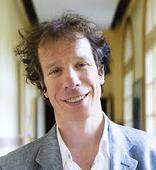The 2015 AMMCS-CAIMS Congress
Interdisciplinary AMMCS Conference Series
Waterloo, Ontario, Canada | June 7-12, 2015AMMCS-CAIMS 2015 Plenary Talk
Learning in High Dimension: from Images to Quantum Chemistry
Stéphane Mallat (Ecole Normale Superieure)
Learning from data means approximating functionals in high dimensional spaces.
Finding strong sources of regularity is necessary to avoid the curse of
dimensionality. Invariance to action of small groups such as rigid
displacements is too weak, but stability to action of diffeomorphims is a much
stronger property, statisfied by many physical functionals and most signal and
image classification problems. We show that it is sufficient to approximate
complex high-dimensional classification and regression functionals.
We introduce scattering operators, which are invariants to low-dimensional Lie groups, and Lipschitz continuous to actions of diffeomorphisms. They are computed with iterated multiscale wavelet transforms. These scattering operators provide a Euclidean embedding of geometric distances and a representation of stationary random processes, which captures intermittency phenomena. Applications will be shown for several image classification problems, and for learning quantum chemistry energy functionals.

Stéphane Mallat received the Ph.D. degree in electrical engineering from the
University of Pennsylvania, in 1988. He was then Professor at the Courant
Institute of Mathematical Sciences. In 1995, he became Professor in Applied
Mathematics at Ecole Polytechnique, Paris. From 2001 to 2007 he was co-founder
and CEO of a semiconductor start-up company. In 2012 he joined the Computer
Science Department of Ecole Normale Supérieure, in Paris.
Stéphane Mallat’s research interests include signal processing, computer
vision, harmonic analysis and learning. He wrote a “Wavelet tour of signal
processing: the sparse way”. In 1997, he received the Outstanding Achievement
Award from the SPIE Society and was a plenary lecturer at the International
Congress of Mathematicians in 1998. He also received the 2004 European IST
Grand prize, the 2004 INIST-CNRS prize for most cited French researcher in
engineering and computer science, and the CNRS innovation medal in 2014. He was
elected at the French Academy of Sciences in 2014.